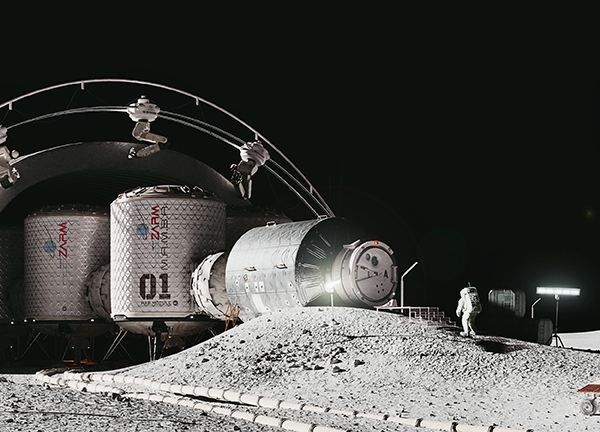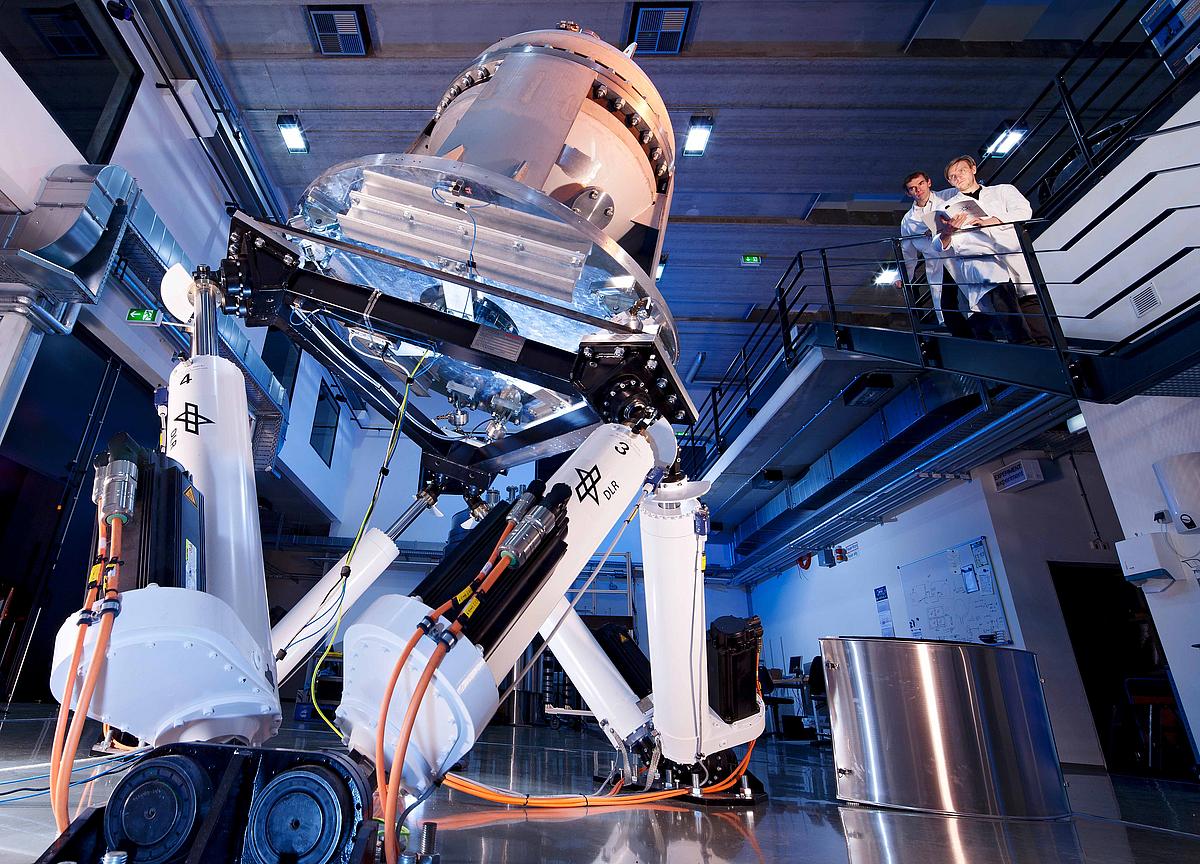Research and Science
Space research takes place in the departments and institutes of the University of Bremen and is often closely linked to neighbouring scientific institutions. In addition, there are project-related cooperations with the space industry.
The Center for Applied Space Technology and Microgravity (ZARM) is a scientific institute in the Department of Production Engineering at the University of Bremen. The focus is on fluid dynamics, space technology and space sciences. In addition, independent research groups work in the fields of materials science and exploration, especially with regard to space habitats and life support systems. The scientists are investigating, among other things, how a moon and mars habitat could look like, how the fire risks can be reduced on manned space stations, how more energy-efficient materials can be produced in weightlessness, how the optimal handling of liquids can be guaranteed, e.g. in rocket tanks, or how Einstein's general theory of relativity can be tested with satellites.
For this they use experimental, theoretical and numerical approaches of basic research. At the same time, they develop technologies for space missions and microgravity experiments, which are tested on the International Space Station (ISS), on sounding rockets, on parabolic aircraft or in ZARM's own Bremen Drop Tower.
The Institute for Environmental Physics (IUP) at the University of Bremen has set itself the goal of researching the Earth system using physical methods. The focus is on atmospheric research, marine and cryospheric research and remote exploration. Earth observation satellites are one of the most important tools for our scientists. They enable us to look at our ecosystem from above, for example to obtain data on climate research and weather forecasts or to produce digital maps of the Earth.
The Center for Industrial Mathematics (ZeTeM) at the University of Bremen deals with the modeling and solution of complex problems in the natural and engineering sciences. Modern methods of applied mathematics are used. We take over the whole process of problem solving from modeling, mathematical analysis to the development of software and simulations.
In the field of space travel, we deal, for example, with the cognition-based, autonomous navigation of space systems for soil sampling on planets and asteroids, the flight path calculation for re-entry space vehicles and carrier rockets, the optimization of satellite constellations or the calculation of an optimal flight maneuver for a lunar module, which is supposed to land safely on the lunar surface.
At the Institute for Space Systems of the German Aerospace Center (DLR), we design, analyse and evaluate future spacecraft and space missions with the aim of improving the performance and efficiency of existing technologies. The focus is on launcher systems, orbital and exploration systems as well as satellites.
In practical terms, our rsearch focuses, for example, on the behaviour and handling of cryogenic fuels in tanks, landing technologies, attitude and orbit control systems, avionics systems and high-precision optical measurement systems.
The Robotics Innovation Center (RIC) is part of the Bremen location of the German Research Center for Artificial Intelligence (DFKI) GmbH. Here, scientists develop mobile, intelligent robot systems that are to be used in space for complex tasks, among other things, in order to advance extraterrestrial exploration. The RIC cooperates closely with the Robotics Working Group of the University of Bremen.
The 288 square metre space exploration hall makes it possible to test space robots under realistic conditions. Climbing robots test their abilities in the nine metre wide crater landscape and with a height of ten metres there is sufficient space to test flight systems and interactions between satellites and robots.





